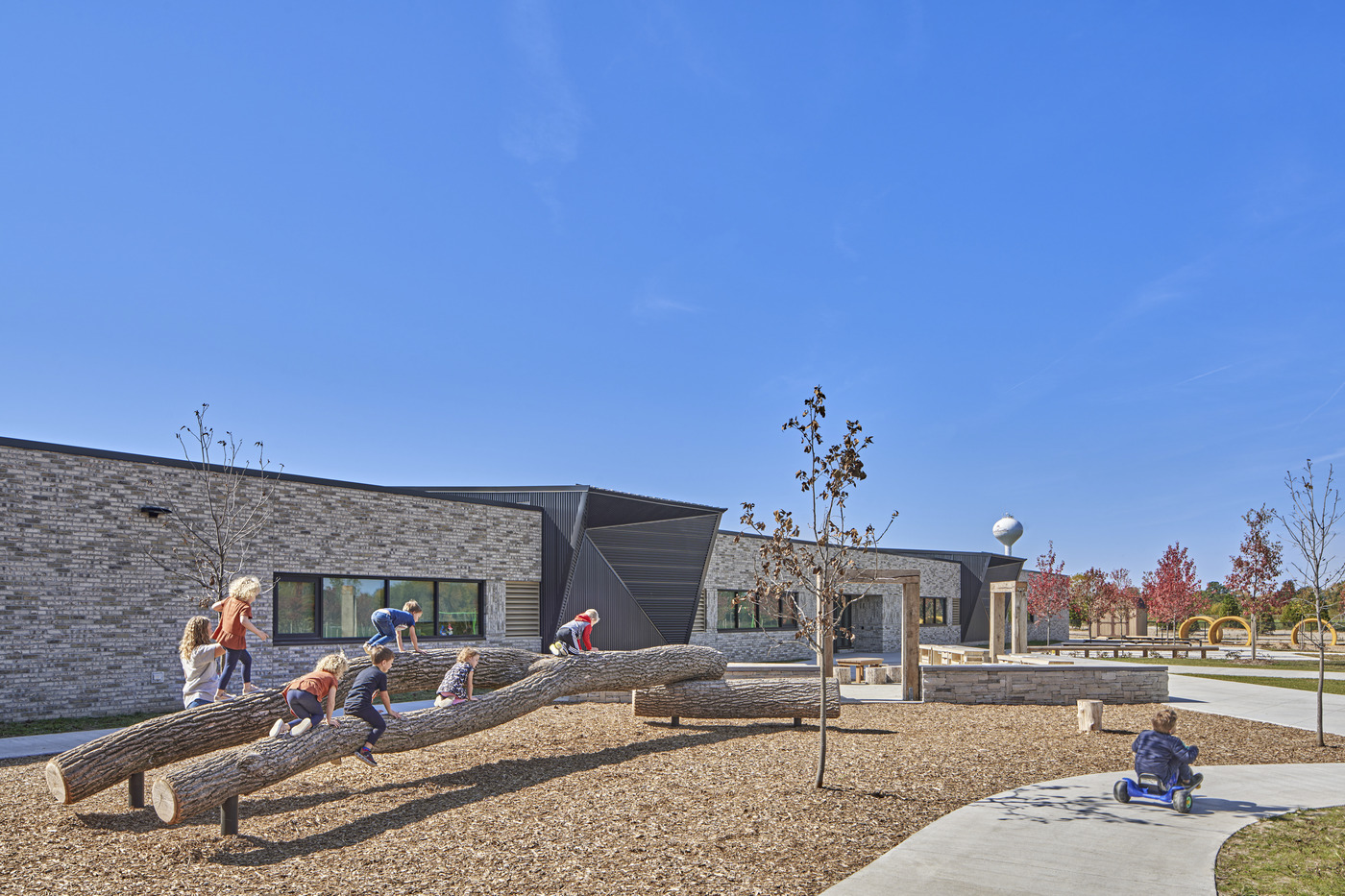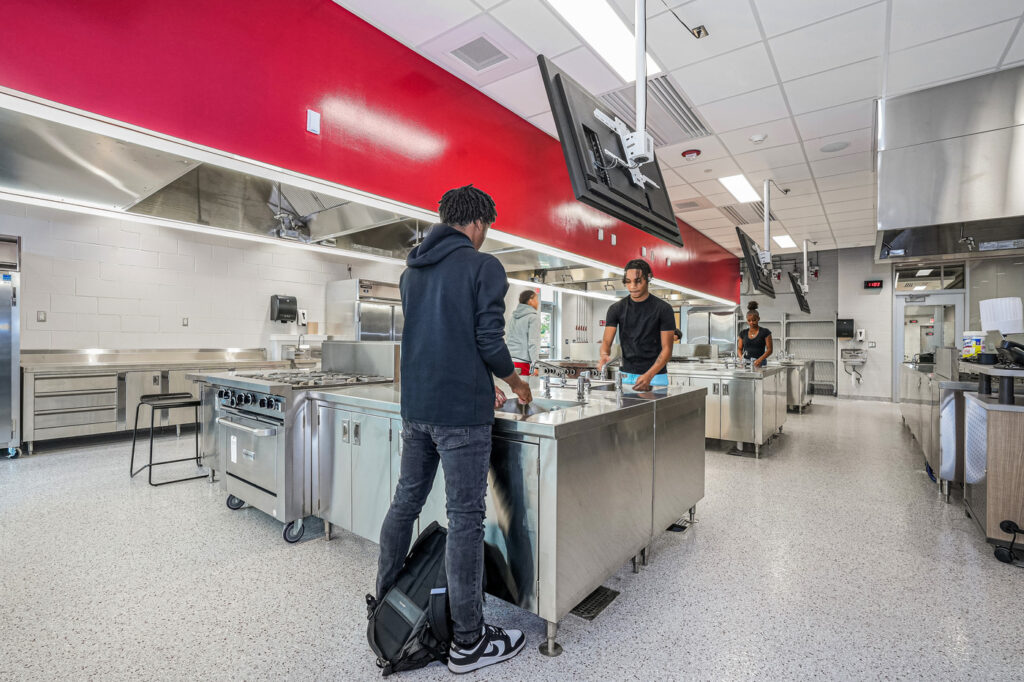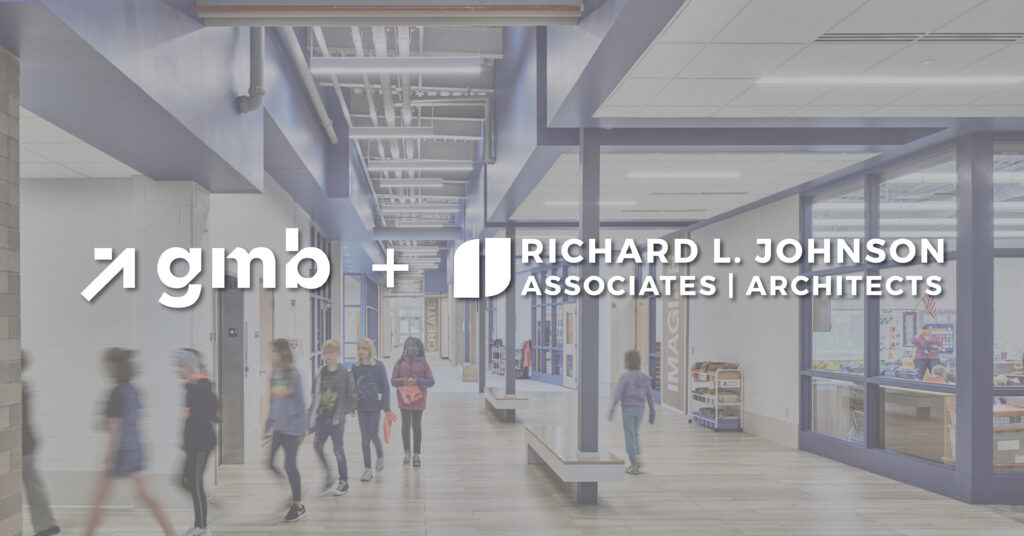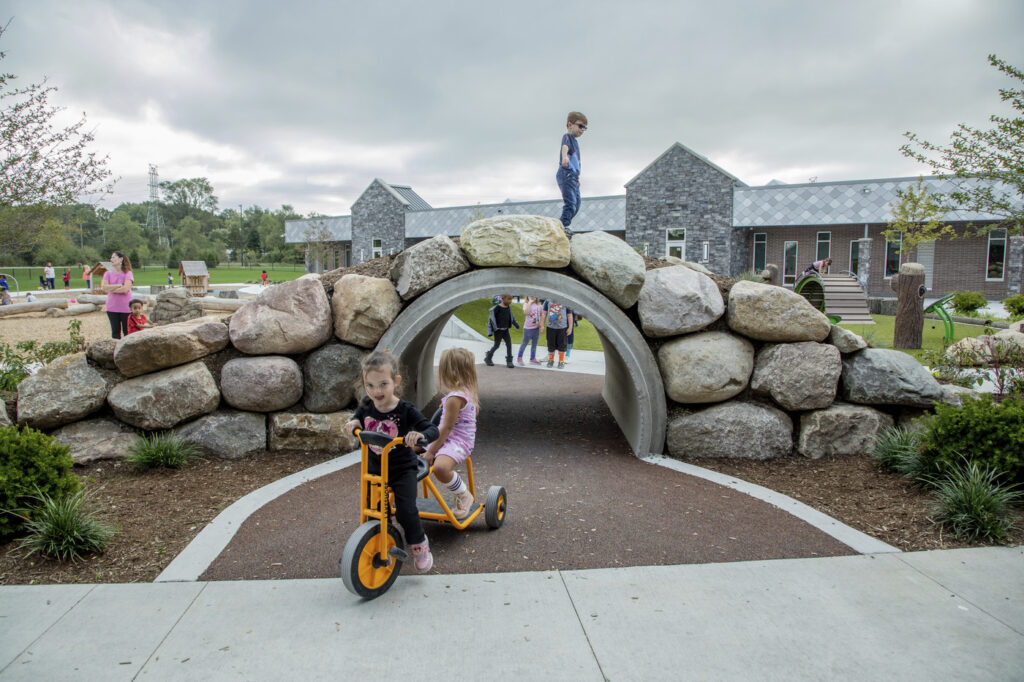The earliest years of life are a time of remarkable growth. In fact, more than 90% of a child’s brain development happens before the age of five. During this critical window, children begin to form the building blocks of communication, emotional regulation, motor skills, and early literacy. It’s a time when every experience matters and the environments in which those experiences take place matter even more.
As school districts continue to expand their offerings for early learners, Early Childhood Centers (ECCs) are evolving from simple classrooms into purpose-built environments that support learning, care, and exploration at the very beginning of a child’s academic journey. These centers are often the first impression a family receives of their school district and the starting point of a lifelong connection to education.
Investing in an ECC is a strategic move. It supports visibility, creates familiarity for families with district culture and values, and ensures continuity in learning and support services. When designed intentionally, ECCs also serve as vital community resources, connecting children, families, educators, and caregivers in meaningful ways.
What Really is an Early Childhood Center?
A true ECC is a dedicated facility focused exclusively on early learners, typically from birth through age five. These centers may house a wide range of programming under one roof, including:
- Michigan’s Great Start Readiness Program (GSRP) – a state-funded preschool initiative for four-year-olds. Since 2023, Michigan has adopted a PreK for All program, aimed at providing every 4-year-old in the state with access to prekindergarten by 2027.
- Head Start – federally funded programming supporting income-eligible families.
- Early Childhood Special Education – targeted interventions and inclusive support for children with developmental delays or disabilities.
- Tuition-Based Preschool – options for families seeking enrichment or full-day preschool.
- Daycare and Wraparound Services – extended care options that align with family work schedules and provide consistency throughout the day.
This mix of services allows ECCs to meet families where they are and provide a consistent, nurturing experience during the most formative years. Children gain a sense of familiarity and comfort with their school environment early on, easing transitions into kindergarten and beyond.
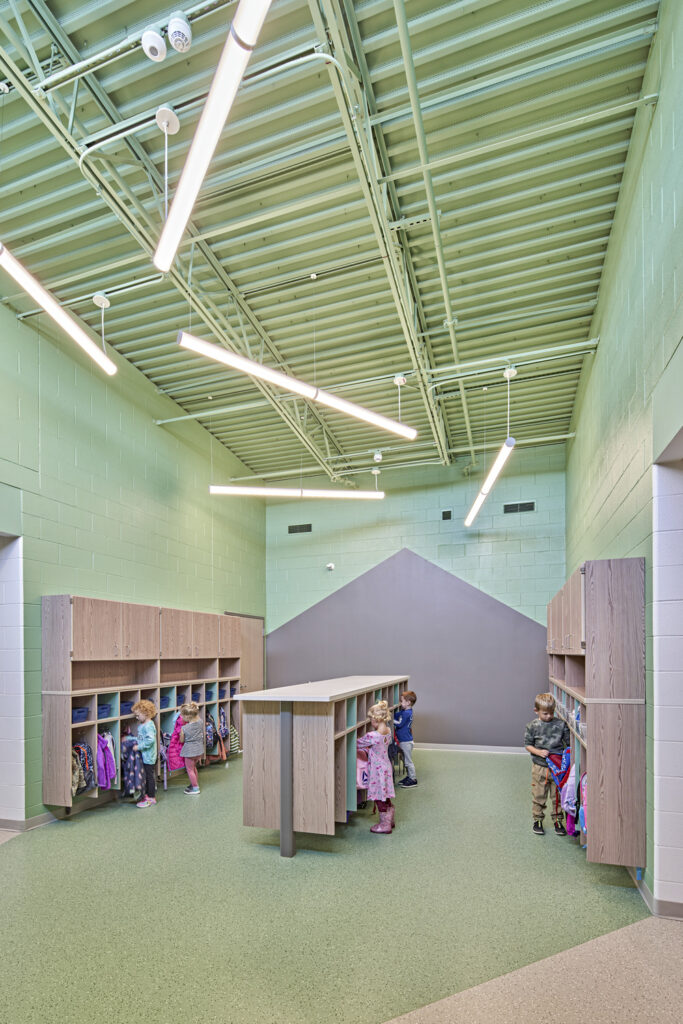
Designing with Development in Mind
Emerging research in neuroscience makes a compelling case for why early childhood environments should be designed with both intention and empathy. The physical spaces they occupy can either support or inhibit brain development, emotional security, and the ability to learn.
The most effective early childhood environments are designed at a child’s scale — both physically and experientially. After designing many of these facilities, we have learned that ECC design often begin with the basics:
- Scale and Proportion: Furniture, fixtures, and circulation paths should be tailored for small bodies and growing independence. Visibility and supervision are enhanced when sight lines are clear and spaces are intuitive for children to navigate.
- Color, Branding, and Wayfinding: A thoughtful use of color can help differentiate program areas or age groups while contributing to wayfinding. Instead of word signs, the use of colorways and iconography can help children identify their classrooms and hallways. ECCs are also a key opportunity to introduce district branding elements like mascots, logos, and iconography in playful, welcoming ways that make students and families feel connected from the start.
- Experiential Graphics: Murals, sensory experiences, and visual storytelling elements can transform walls into opportunities for curiosity and learning. These often reflect the community’s culture and values, creating a sense of belonging and representation for every child.
- Flexibility of Space: Clearly defined zones for active vs. quiet exploration or small vs. large group learning help children engage meaningfully with their peers and creates a sense of calm and predictability.
When these design principles are in place, an ECC becomes a safe, stimulating space where children can grow socially, emotionally, and cognitively.
Trends in Early Learning that Support the Whole Child
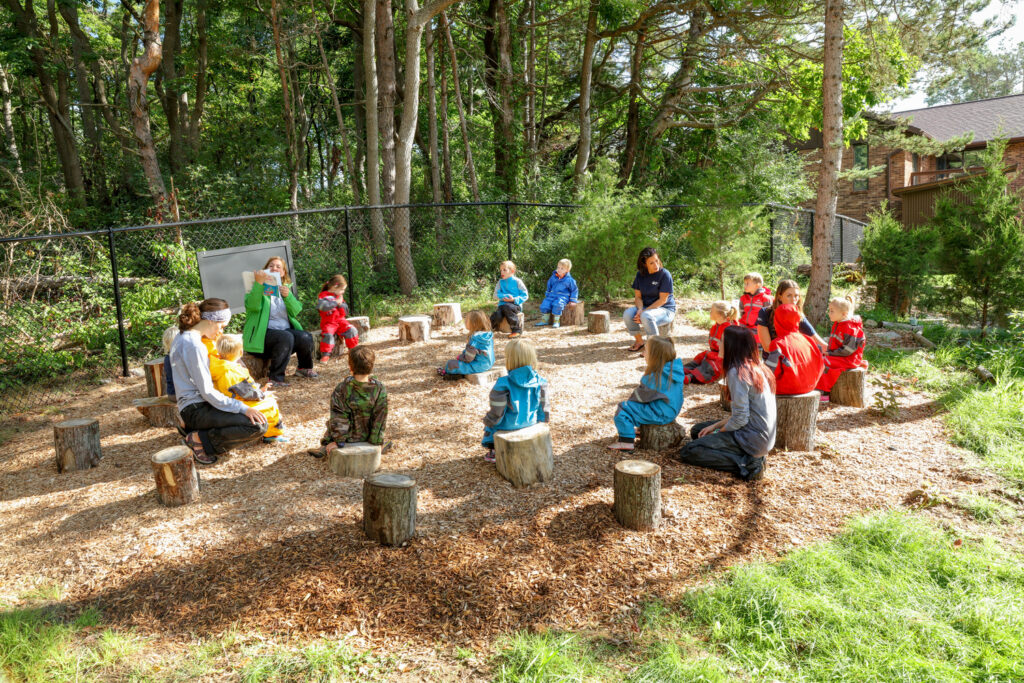
Today’s ECCs are embracing broader educational goals that focus not just on academics, but on nurturing the whole child.
- Sensory and Tactile Exploration: Learning through touch, motion, sound, and play is essential for young children. Materials that encourage interaction help develop fine motor skills and sensory integration.
- Outdoor Learning Environments: Nature-based play areas, trike paths, and gardens allow children to engage with the natural world, develop gross motor skills, and experience the benefits of unstructured exploration. Outdoor classrooms and covered extended learning areas can encourage learning beyond four walls.
- STEM Exposure: Even our youngest learners can experiment with simple STEM-based activities, build structures, and explore technology. Creating opportunities for curiosity, collaboration, and discovery in age-appropriate ways builds the foundation for future curiosity and academic success.
The ECC as a Strategic Investment
A well-designed Early Childhood Center acts as a launchpad for lifelong learning, a place where families begin their relationship with education, and a cornerstone of district identity and community trust. By investing intentionally in early childhood planning and design, school districts are demonstrating a commitment to their youngest learners and to the future of their entire educational ecosystem.

